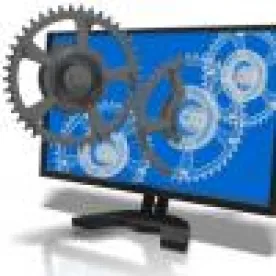Takeaway: A reference that is relied upon to show motivation for a proposed modification in an obviousness ground of unpatentability is not required as part of an obviousness case, and therefore, may not need to be a printed publication under 35 U.S.C. § 102.
In its Final Written Decision, the Board granted-in-part Patent Owner’s Motion to Amend. In particular, the Board granted the Motion with respect to Patent Owner’s request to cancel claims 1-24 of the ‘684 patent, but the Motion was denied with respect to proposed substitute claims 25-48.
The ‘684 patent “relates to encrypting data in a network memory architecture.” All 24 claims of the ‘684 patent were challenged as being unpatentable under either 35 U.S.C. § 102 or 103 based upon the McCanne reference and various secondary references. Patent Owner did not file any Response to the Petition but filed a Motion to Amend requesting cancellation of all challenged claims and to substitute claims 25-48 in their place. The Board granted the request to cancel the claims and then addressed the proposed substitute claims.
The Board noted that Patent Owner, the moving party, has the burden to establish entitlement to the relief request. In particular, Patent Owner must establish by a preponderance of the evidence the patentability of the substitute claims, which the Board found Patent Owner had not met.
Addressing claim construction, the Board noted that in its Motion to Amend, Patent Owner “should identify specifically the feature or features added to each substitute claim, as compared to the challenged claim it replaces, and come forward with technical facts and reasoning about those feature(s).” Patent Owner should provide “construction of new claim terms, sufficient to persuade the Board that the proposed substitute claim is patentable over the prior art of record, and over prior art not of record but known to the patent owner.” Finally, the Board noted that claim terms are given their broadest reasonable construction in light of the specification.
Patent Owner contended that no terms in the proposed substitute claims required construction; however, the Board disagreed, indicating that the term “data” needed interpretation. In particular, Petitioner argued that the term data recited in the original claims was required to be encrypted before it was sent, and that in contrast, the substitute claims eliminating this feature. Patent Owner disagreed, citing the specification to support the position that “data” could be interpreted as being unencrypted and that the claims were “broad enough to encompass any order.” Reviewing the specification and claim language, the Board agreed with Patent Owner and construed “data” to mean “encrypted or unencrypted data.” Thus, in the substitute claims, “original data” has the plain meaning of being unencrypted while the term “encrypted data” is encrypted.
The Board next addressed the scope of the substitute claims. “Proposed substitute claims in an inter partes review ‘may not enlarge the scope of the claims of the patent.’” Petitioner first argued that the substitute claims were broader than the challenged claims based upon its contention that the substitute claims did not require the encryption of data. The Board rejected this argument as discussed above. Petitioner also argued that the dependency of one of the substitute claims was changed relative to the challenged claim it was proposed to replace. However, as Patent Owner pointed out, the dependency of the challenged claim in question included a printing error that was corrected by way of a certificate of correction. Thus, the Board was not persuaded by Petitioner’s arguments and found that the substitute claims do not enlarge the scope.
A patent owner must also set forth “[t]he support in the original disclosure of the patent for each claim that is added or amended” and “[t]he support in an earlier-filed disclosure for each claim for which benefit of the filing date of the earlier filed disclosure is sought.” The Board concluded that Patent Owner made a sufficient showing.
The Board then addressed whether Patent Owner demonstrated the patentability of the substitute claims “over not just the prior art of record, but also prior art not of record but known to the patent owner.” The Board analyzed the proposed substitute claims in light of the prior art, and in particular, McCanne, which was identified as being the closest prior art known to Patent Owner. The Board agreed with Patent Owner that McCanne does not anticipate the proposed substitute claims. However, the Board held that Patent Owner did not show that the claims were not obvious over McCanne.
The Board found, as Petitioner argued, that the proposed modification of McCanne “combines the elements of McCanne in accordance with its teachings to yield the predictable result.” With respect to the rationale for the proposed modification, in addition to McCanne itself, Petitioner cited an additional reference. Patent Owner argued that the reference was not a printed publication, and therefore, not prior art under Section 102. The Board noted that a “reference used to show motivation for a proposed modification, however, is not required as part of an obviousness case.” Nevertheless, the Board found that McCanne provided sufficient suggestion or motivation for the modification, and found the remaining arguments of Patent Owner related to nonobviousness to be unpersuasive.
The Board next addressed the patentability of substitute claims 39-45 and 48 under Section 101. In particular, the Board found that the claims “each recite a ‘software product’ comprising ‘software,’ which will be executed by a processor, and a ‘storage medium that stores the software.’” The Board found that under the broadest reasonable construction, the “language of the claims themselves does not preclude the storage medium from being a transitory signal,” which is not patent eligible subject matter.
Riverbed Tech., Inc. v. Silver Peak Systems, Inc., IPR2014-00245
Paper 42: Final Written Decision
Dated: June 9, 2015
Patent: 8,392,684 B2
Before: Denise M. Pothier, Justin T. Arbes, and Hyun J. Jung
Written by: Jung
Related Proceeding: IPR2013-00403



 />i
/>i
